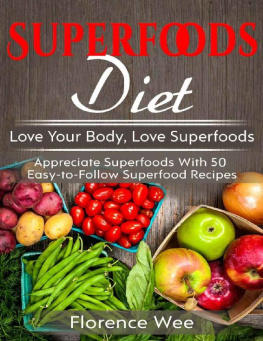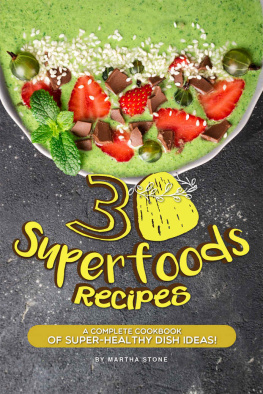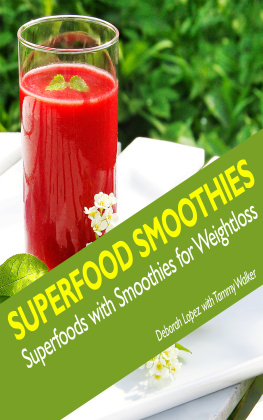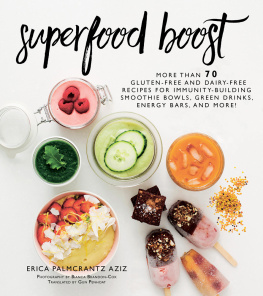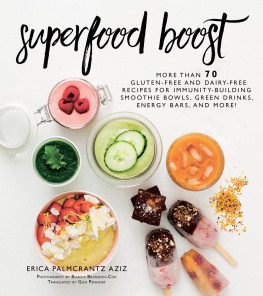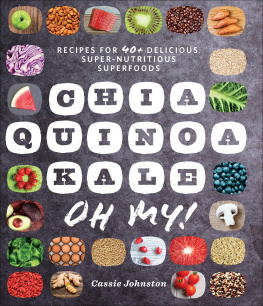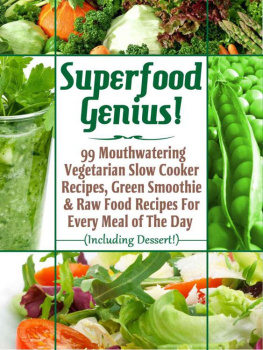

This digital edition first published by Parragon Books Ltd in 2014 and distributed by
Parragon Inc.
440 Park Avenue South, 13th Floor
New York, NY 10016
www.parragon.com/lovefood
LOVE FOOD is an imprint of Parragon Books Ltd
Copyright Parragon Books Ltd 2014
LOVE food and the accompanying heart device is a registered trademark of Parragon Books Ltd in the USA, the UK, Australia, India, and the EU.
All rights reserved. No part of this publication may be reproduced, stored in a retrieval system, or transmitted, in any form or by any means, electric, mechanical, photocopying, recording, or otherwise, without the prior permission of the copyright holder.
ISBN: 978-1-4723-8662-5
New recipes and food styling by Sara Lewis
Created and produced by Pene Parker and Becca Spry
New photography by Haarala Hamilton
Notes for the reader
This book uses standard kitchen measuring spoons and cups. All spoon and cup measurements are level unless otherwise indicated. Unless otherwise stated, milk is assumed to be whole, eggs are large, individual vegetables are medium, and pepper is freshly ground black pepper. Unless otherwise stated, all root vegetables should be peeled prior to using.
Garnishes, decorations, and serving suggestions are all optional and not necessarily included in the recipe ingredients or method. Any optional ingredients and seasoning to taste are not included in the nutritional analysis. The times given are only an approximate guide. Preparation times differ according to the techniques used by different people and the cooking times may also vary from those given. Optional ingredients, variations, or serving suggestions have not been included in the time calculations.
Where the author has made all reasonable efforts to ensure that the information contained in this book is accurate and up to date at the time of publication, anyone reading this book should note the following important points:
* Medical and pharmaceutical knowledge is constantly changing and the author and the publisher cannot and do not guarantee the accuracy or appropriateness of the contents of this book;
* In any event, this book is not intended to be, and should not be relied upon, as a substitute for advice from your healthcare practitioner before making any major dietary changes;
* Food Allergy Disclaimer: The author and the publisher are not responsible for any adverse reactions to the recipes contained herein.
* The statements in this book have not been evaluated by the U.S. Food and Drug Administration. This book is not intended to treat, cure, or prevent any disease.
For the reasons set out above, and to the fullest extent permitted by law, the author and the publisher: (i) cannot and do not accept any legal duty of care or responsibility in relation to the accuracy of appropriateness of the contents of this book, even where expressed as advice or using other words to this effect; and (ii) disclaim any liability, loss, damage, or risk that may be claimed or incurred as a consequence directly or indirectly of the use and/or application of any of the contents of this book.
WHAT IS A SUPERFOOD?
Superfoods have been celebrated by nutritionists as being beneficial for health and well-being for years. These nutrient-dense ingredients offer a bundle of essential vitamins, minerals, protein, complex carbohydrates, and good monounsaturated and polyunsaturated fats. A balanced intake of these nutrients is crucial for energy, growth, repair, immunity, and essential metabolic processes. The good news doesnt stop there thoughsuperfoods are also rich in antioxidants and phytochemicals, which can help protect us against cancers, coronary heart disease, strokes, type-2 diabetes, and obesity. No wonder we so often hear that superfoods should be top of our shopping list!
Superfoods can be bought easily from supermarkets, farmers markets, and health-food stores and are often inexpensive. Thanks to their health-boosting qualities, they could almost be called natural medicines, but no prescription is required and there are no negative side effects as long as they are eaten as part of a balanced diet.
The brighter the color of a fruit or vegetable, the more beneficial to health it will probably be. Choose from deep-purple blueberries; ruby-red strawberries and raspberries; bright-orange pumpkins, carrots, and mangoes; and deep-green broccoli and kale. Plant foods are packed with antioxidants and phytochemicals (biologically active plant chemicals). These help to reduce the activity of free radicalsharmful compounds produced by the body, which damage DNA and body tissuesand so they are believed to help protect the body against cancer.
Wash or scrub fruits and vegetables and eat them with the skins on where possible to boost your fiber, vitamin, and mineral intake. This is an easy way to add natural soluble fiber to your diet, which will help stave off midmorning or midafternoon munchies, and to lower cholesterol and protect against bowel cancer.
Plants arent the only superfoods. Nuts, seeds, whole grains, oily fish, and plain yogurt with active cultures are other examples of nutrient-dense, power-packed ingredients.
When altering your diet, take small steps that you can build on instead of making major dietary changes you may struggle to maintain. Theres a lot of truth in the expression we are what we eat, and eating a range of superfoods should help you to feel fitter, lighter, and more energized, and to cope with the hustle and bustle of modern living, while improving your long-term health.
WHAT IS A HEALTHY DIET?
The key to a healthy diet is variety, so try to eat a mixture of many types of foods. Dishes offering low nutritional value, such as sugar- and fat-laden cakes and cookies, can harm you if eaten in large quantities or over a long period of time. They have been linked to obesity, type-2 diabetes, high cholesterol, heart problems, and even cancer. There is nothing wrong with the odd treat, but keep a burger and fries or a slice of chocolate cake as just that, an occasional treat.
In Western countries, 21st-century diseases are more commonly caused by dietary excess and imbalance than by nutritional deficiency. It is important to eat foods from all the main food groups: carbohydrates, proteins, fats, vitamins, and minerals. However, some foods are better than others. Opt for whole-grain carbohydrates, rich in fiber, because these take a long time to digest, leaving you feeling fuller for longer and releasing energy slowly to help you avoid mood swings and lethargy, and they are thought to help lower cholesterol.
Add sugar to foods sparingly, if at all, choosing naturally sweet fruits and dried fruits in place of highly refined white sugar.
Instead of butter and cream, choose virgin cold-pressed oils, such as olive or canola oil, or try hemp, flaxseed, or walnut oils. Low-fat versions of yogurt with active cultures, cottage cheese, cream cheese, or ricotta also make healthy options. Grill or broil meat and fish instead of frying them to lower your fat intake, and choose clean meats, such as protein-rich skinless turkey breast, which is low in saturated fatthe primary cause of clogged arteries. When using hard cheeses, such as cheddar, Swiss Gruyre, or Parmesan, which are high in fat, grate them so that a little goes a long way.
Cut back on sodium. Just 1 teaspoon of salt equals 2,400 milligrams of sodium. Junk food, frozen dinners, and chilled prepared meals and snacks all tend to be high in sodium.



